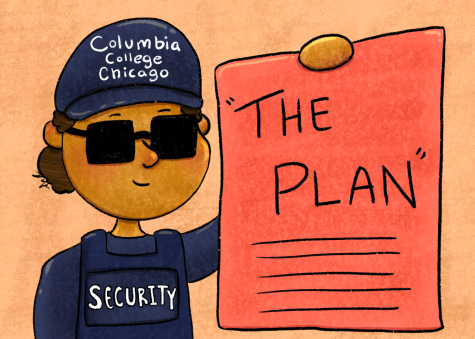College to update Campus Violence Prevention Plan for the first time in 7 years, open for feedback
October 19, 2022

Columbia’s Campus Violence Prevention Plan which provides instructions on reporting and responding to imminent danger and violence on campus has not been updated since its publication seven years ago.
Now, there is a working draft of an updated plan that is open for feedback from the Columbia community until Oct. 26. According to the Campus Safety and Security website, feedback can be submitted through an online forum provided on the Campus Safety and Security website that will be reviewed by the Campus Violence Prevention Committee before the final draft is potentially revised and then approved and published.
The Columbia Violence Prevention Plan, also known as CVPP, was last updated Jan. 6, 2015. Campus Security released a statement on Sept. 27 announcing that the working draft of the CVPP was available for review and feedback from the campus community.
“Violence prevention is at the forefront of our efforts at Campus Security,” said Ron Sodini, associate vice president of Campus Security, in an email to the Chronicle. “It is important to note that continuous and ongoing enhancements and adjustments to enhance safety have been implemented since the last publication and our approaches are never static.”
According to the 23-page document, the CVPP was created in response to the Illinois Campus Security Enhancement Act of 2008, which requires institutions of higher education in Illinois to “develop an inter-disciplinary and multi-jurisdictional campus violence prevention plan.”
The updated plan addresses a range of possible violence that could occur on campus along with protocols, programs and forms of prevention for the Columbia community that are put in place to address a specific incident.
The plan also includes Columbia’s drug and alcohol policy, documenting on- and off-campus resources put in place for students who may need assistance with substance abuse.
The update includes information on Columbia’s personal safety class “Kick A@@” which helps community members “navigate the campus and city with confidence, repel an attack with self-defense techniques, understand the effects of trauma and discover on-campus resources for safety and support.”
Along with the updated CVPP, Columbia has an updated guide for active shooter response resources, which includes a comprehensive video for what to do in the event of an active shooter and a list of how to respond using the U.S. Department of Homeland Security’s RUN-HIDE-FIGHT method.
These updated guides provide comprehensive information that was not available to students and the Columbia community before. Prior to these updates, Campus Safety and Security had only suggested that students and Columbia community members look into the RUN-HIDE-FIGHT method instead of providing a video and step-by-step guide on what to do in response to an active shooter.
Jennifer Sadler, assistant professor in the Business and Entrepreneurship Department and vice president of the Faculty Senate, said campuswide there are not many active shooter trainings made available because most college students received active shooter training during their K-12 education.
Despite this, Sadler said there will still be incidents where the CVPP provides guidance needed if a weapon were to be brought on campus and who should be contacted in the event of such an incident.
“Because we don’t have metal detectors or things like that, it can be quite easy for a student to bring a weapon to campus,” Sadler said. “How do you navigate that? Like in classrooms, specifically, how do you get people in and out? How do you barricade yourself, and then who needs to know?”
Karen Konow, a watch commander within Campus Safety and Security, said creating prevention strategies and responding to violence is a shared task and responsibility.
“I think there’s a sense in many other institutions or communities of sort of a shared awareness for safety and security of getting people [in] the frame of mind, where we can have ongoing dialogues, ongoing conversations, encourage one another’s situational awareness and have a mutual sense of helping one another be safe,” Konow said.
Sadler said while she has not seen any feedback on the working draft, she hopes that students and faculty will take part in making suggestions to the document as the Columbia community includes people from many diverse backgrounds who can provide perspective on the plan.
“Especially when you’re thinking about how you’re describing offenders, for example, or how you articulate emergency situations for members of our community who are deaf, or hearing impaired or visually impaired,” Sadler said. “I love the fact that you open it up to the public, but I think it’s just to make it really transparent.”







